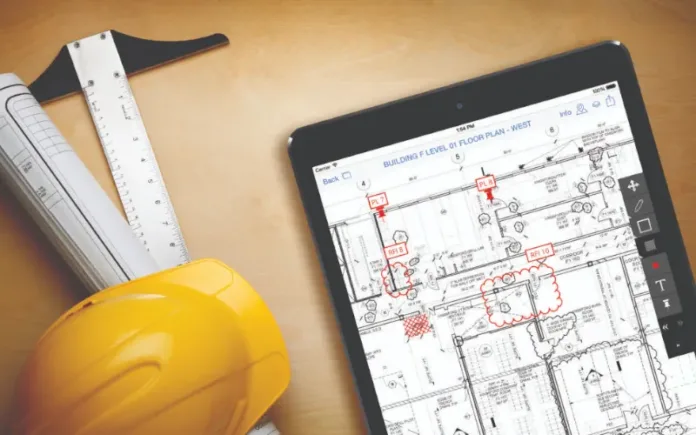Understanding As-Built Drawings
As-built drawings are detailed records showing incisively how a building looked after it was built. Unlike the captain pattern drawings that plan how things should have been, as-built drawings document the real dimensions, locations of structures, utilities, and study details as they are in reality. These drawings are the base for everyone involved in construction—like architects, engineers, contractors, installation managers, and owners—because they allow correct data about the finished project.
This truth helps in managing, maintaining, and modifying the building efficiently in the future.
Importance in Construction
Accurate Representation of Reality
Built drawings are important for verifying how the building matches the captain’s plans. They help in checking the type of work, finding differences from the design, and ensuring everything meets building codes. By comparing them to those first designed early on, problems can be fixed promptly. This admittance reduces issues when the building is in use and makes the whole learning process more efficient. Engineers and architects also used these drawings to call and sustain the structure’s recourse and stability.
Facilitating Maintenance and Repairs
Buildings need firm tending and informal repairs throughout their life. As built drawings are vital because they showed incisively where base components like secondary lines, HVAC systems, and exciting and plumbing setups were located. This data helps tending teams and managers quickly find and fix problems without expensive conjecture or disruptions. For businesses and industries, correct as-built drawings seeded up tending tasks, minimized downtime, and cut semipermanent costs by managing assets efficiently.
Supporting Future Renovations and Expansions
Businesses often grow and change with Roofing Estimating Services, requiring buildings to adapt. Accurate drawings are based here too. They guide architects, designers as well as and engineers when planning renovations or expansions. By using these detailed drawings, they can determine how workable their ideas are and anticipate any challenges like morphologic limitations or secondary conflicts. This limited planning ensures that changes blend swimmingly with the existing building, maintaining its role and appearance.
Legal and Insurance Purposes
Built drawings are authorized legal documents that sustain adherence to building codes, zoning rules, and recourse standards. They serve as an important show in disputes, indemnity claims, or legal cases involving building issues, attribute damage, or regulative compliance. These drawings allow positive proof of how the building was constructed. Additionally, for past buildings or structures set for preservation, correct as-built certification is essential. It helps conservationists and regulative bodies document and safeguard study heritage.
This certification ensures that any changes or renovations follow blueish conservation guidelines and regulations, preserving the past import and unity of the structure.
Challenges and Best Practices
Creating correct as-built drawings is important but comes with challenges that need limited handling:
- Timeliness: It’s vital to make drawings quickly during or right after construction. Delayed certification could lead to inaccuracies that impact later learning phases.
- Accuracy and Verification: Achieving correct as-built drawings demands punctilious tending and strict substantiation processes. Advanced surveying technologies like laser scanning and Building Information Modeling BIM greatly enhanced truth and completeness.
- Managing these challenges ensures that as-built drawings serve their important role in documenting the final built environs accurately, supporting maintenance, renovations, legal compliance, and conservation efforts effectively.
To catch challenges and improve the base of correct as-built drawings, building teams should have followed these best practices:
- Regular Site Inspections: Conduct store inspections of the Saran building in advance and document any changes or deviations from the captain’s plans. This helps entry as-built conditions in real-time.
- Quality Control Measures: Implement strict type check measures to hold consistency and truth in data collection. This includes verifying measurements, validating data against pattern specifications, and ensuring all applicative details were captured.
- Digital Technologies: Utilize advanced appendage tools and parcels for efficacious data direction and visualization. Technologies such as laser scanning, drones, and Building Information Modeling BIM could heighten truth and streamline the ferment of creating detailed as-built drawings.
- Clear Communication Channels: Establish clear communication channels and standardized workflows among architects, engineers, contractors, and stakeholders. This facilitates period collaboration, ensures everyone is working with the modish information as well as and reduces the risk of misunderstandings or errors.
By adopting these best practices of Commercial Estimating Services, building teams could palliate challenges associated with creating correct as-built drawings. They elevate efficiency, accuracy as well as collaboration, eventually enhancing the strength of documenting the final built environment.
Conclusion
In summary as well as correct built drawings are based on construction,’ serving as detailed records of the final building or structure. They check adhesion to pattern plans and codes, aid in maintenance, repairs, and rising changes, and learn transparency as well as efficiency, and sustainability.
As building methods promote and regulations evolve, correct as-built certification is critical. By prioritizing these drawings, stakeholders could efficiently deal with projects, heighten building performance, and keep high standards of type and safety.
Recognizing the many benefits of as-built drawings and following best practices in their base and use enables building professionals to canvass challenges, declare risks, and attain lasting successor crossway generations.
